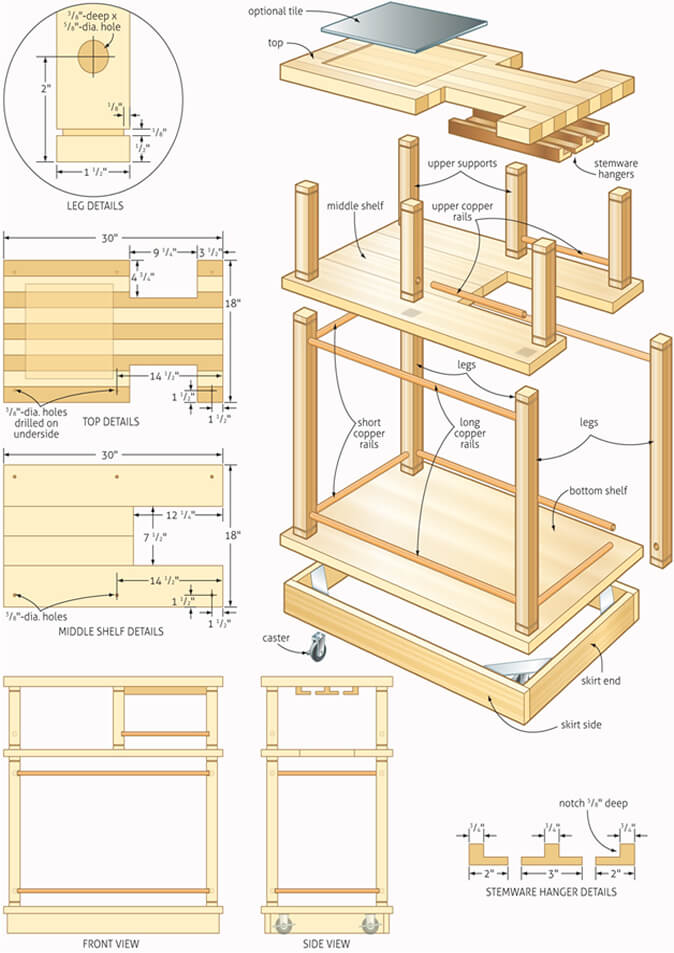When you’re shopping for a new bed, it’s hard to know what to look for and how much you should spend. There are so many different parts that all serve different functions.
We created this blog post to explain the different parts of a bed and their functions in an easy-to-understand way. This is great information if you’re looking into buying a new mattress or just want to learn more about your current one.
Read on below for our handy guide on the parts of a bed and how they work together.
The Headboard
The headboard is the large backboard of your bed that you lean against. They come in all different sizes, shapes, and colors. Some are upholstered (featuring fabric) while some may be solid wood or metal.
The bed frame rests directly on top of the headboard. The best way to measure for a new headboard is from the floor to the desired height. That gives you an accurate reading when determining how much space you have to work with.
The headboard is made up of a number of sections, including:
- Headboard slat: This holds the headboard together and can support larger mattresses.
- Headboard brackets: These are small pieces of metal that connect the headboard slat to the bed frame, creating a secure hold.
- Headboard posts: This acts as a connector between your headboard and your bed frame. The posts may include decorative finials at the top and connecting knobs for easy assembly.
The Side Rails
Also known as sideboards, these sturdy pieces make up a portion of each side of your bed frame. You can also call them “bed frames” if you prefer not to use this term because it can make some confusion when describing a bed to someone else.
The side rails help to support the bed structure and ensure that your new mattress has a sturdy home. The side rails are attached directly to the headboard and footboard of the bed, which makes them an important part of durability for not only your mattress but also your new box spring.
Bed Side Rail vs. Bottom Side Rail
A bottom side rail sits on the ground and attaches to your bed frame. This is surrounded by slats that create a more comfortable sleeping surface for you.
A bedside rail goes up right next to your mattress, which can help keep kids from falling out of bed or making it easier to get into bed. Having a rail here also helps with durability around where you sleep because this is an area that typically has some wear and tear.
The Footboard
The footboard is another large backboard of your bed that acts as the bottom of your bed frame. It’s usually smaller than the headboard so you can lean against it with ease. This piece of furniture may include some storage space, either on its own or built right in to the footboard of your platform bed.
There are two major types of beds: hard-sided (headboards & footboard) and soft-sided (platform beds).
- Footboard Slat: This is the section on top of your footboard, which can add to its overall sturdiness.
- Footboard Brackets: These make up a small piece of metal that connects the footboard slat to your bed frame and offers increased support and durability.
The Legs
No matter what style of bed you have, four legs are always involved. They should go straight down the corners of your bed frame to give it additional support. The best height for these is about half an inch above the floor because that’s where they’ll rest when you put on your mattress. For adjustable bases, make sure you measure properly so that your gap isn’t too large.
Box Spring
A box spring sits right underneath your mattress. It provides great back support while also raising your mattress for extra storage space underneath. If you sleep with a partner, this is a good option because it allows both of you to use the same surface without feeling like one person is sleeping higher than the other.
Cut Slats
The cut slats are thin pieces of wood that rest between your mattress and box spring. The amount you need depends on how much room is in between them, but it’s usually around eight to ten. They’re spaced about an inch apart, making sure that there isn’t too large of a gap or not enough (if they’re too close together). These help to keep your bedding in place while also providing extra support for your body when relaxing.
Cleats
The cleats are what connect the headboard, footboard, and side rails together. You can either screw these in or attach them with brackets, creating a sturdy foundation without any gaps in between. This is why measuring is so important: you don’t want any room for your bedding to slip away and get wrinkled behind the headboard or footboard.
Box Spring
A box spring is a sturdy foundation that rests underneath your mattress. It’s built with springs inside it to provide great back support, but also helps to lift your mattress up for more storage space. Usually, box springs come in pieces so you’ll need one part for each side of the bed frame. Make sure you measure both sides before purchasing anything.
Different Bed Designs and Parts
Daybed
A daybed is a great option if you’re looking for a less bulky bed frame. It has a much different design from any other bed, with no headboard or footboard included. This is because it’s made to look like a bench that can be used as extra seating during the day and gets converted into an extra sleeping space at night. If you have kids, this can help keep them off your main mattress so they don’t mess up the sheets or get drop crumbs onto the sheet below.
Futon
A futon is another type of daybed that can convert into a bed at night. Most futon mattresses are firm to give you support no matter which side you’re sleeping on, but they also come in soft options if you want something more comfortable during the day that still offers good back support when lounging.
Platform Bed
This style of bed doesn’t have any box spring or springs underneath the mattress; instead, its design is meant to provide you with support on top of the frame. Many platform beds are already made sturdy without extra tools like legs or cleats, but if yours weren’t, you can always add them later for increased support.
Waterbed
A waterbed is becoming less popular thanks to the popularity of foam mattresses, but they’re still a great option for those who don’t like sleeping on such soft surfaces. The mattress is most commonly made with water inside it, which provides increased pressure relief and deep compression support. It works best if you don’t have any back problems, but this style does make up for its lack of comfort with sturdiness and durability.
Airbed
An airbed is similar to a waterbed in that there’s a large amount of air inside the mattress, but it doesn’t require any water. It provides great back support and pressure relief, making it a healthy option for those who need more comfort when they sleep. This type of bed is also great if you have allergies or asthma since it won’t allow dust mites and other allergens to get trapped inside like with regular mattresses.
Murphy Bed
A Murphy bed is a great way to save space during the day since you can hide your bed underneath cabinet doors. This type of bed doesn’t have any legs or support though, so it’s not meant for guests who will be sleeping on it. If intended for yourself, you’ll need to make sure there’s enough room in between the floor and cabinet bottom for your mattress, but also make sure you have storage space if your mattress is too tall.
Canopy Bed
A canopy bed is a bed with a canopy above it made from sheer fabric or curtains. This type of bed is best if you want something that will keep you protected from any draft, but isn’t meant to give much support at all. It’s important to have another foundation underneath your mattress since the canopy only gives shade and looks pretty, not good sleeping conditions.
Topper
A topper is an excellent option that adds some extra cushioning to your sleep experience. Most are made with memory foam inside them, which helps with pressure relief through conforming exactly to your body’s curves rather than pushing against them. However, some are just flat sheets without any foam at all, so you can choose which option is best for you.

